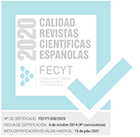Nomenclatural revision and syntaxonomical proposal for wetland peat vegetation in the Valdivian-Magellanian region
Resumen
Abstract. Although numerous descriptive studies have been published throughout the 20th century on peat communities in the Southern Cone of South America, the nomenclature applied to the different units recognised often fails to take into account the proposals of previous authors. Our aim is to clarify the nomenclature by applying the rules of the ICPN to propose a current syntaxonomy of the class Myrteolo nummulariae-Sphagnetea magellanici. After a bibliographic compilation of possible peatland associations from the part of South America between parallels 40º and 56º south, under Temperate and Boreal macroclimates, we have collected around 30 names of phytosociological associations and alliances containing an abundance of homonyms and nomina nuda. Following ICPN standards, we have eliminated duplications and established priority names over others, lectotypified some names and rejected others as nomen ambiguum. We have arranged the floristic groups in the recognised associations in synthetic tables, with some nomina nuda whose characterisation we interpret as doubtful, as a proposed syntaxonomical organisation of the phytosociological class.
The various communities recognised by the different authors who have worked in the territory can be divided into four physiognomic groups: A) cushion bogs, B) Sphagnum bogs C) “montane tundra” bogs and D) sedge-grass bogs. The syntaxonomic grouping we propose for the 13 associations recognised as nomenclaturally valid can be summarised as follows: a single class, Myrteolo nummulariae-Sphagnetea magellanici, is accepted, with a single order, Myrteolo-Sphagnetalia, and three alliances: Astelio pumilae-Oreobolion obtusanguli with seven associations (coinciding with type A), Gaultherio-Sphagnion magellanici with four associations (type B), and Abrotanello linearifoliae-Bolacion caespitosae with two associations (type C). We contest the validity of around 22 names of syntaxa of different ranks, while acknowledging that more studies are required, particularly to define and delimit type D peatland communities.Descargas
Descarga artículo
Licencia
LICENCIA DE USO: Los artículos a texto completo incluidos en el Portal de Revistas Científicas Complutenses son de acceso libre y propiedad de sus autores y/o editores. Por tanto, cualquier acto de reproducción, distribución, comunicación pública y/o transformación total o parcial requiere el consentimiento expreso y escrito de aquéllos. Cualquier enlace al texto completo de los artículos del Portal de Revistas Científicas Complutenses debe efectuarse a la URL oficial de la Universidad Complutense de Madrid.









